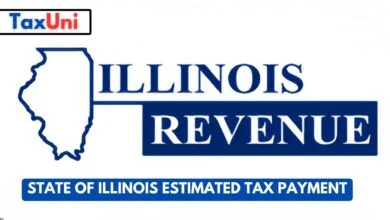Above-the-line Deductions
In this guide, we will explore what above-the-line deductions are and why they are so important, provide a list of common above-the-line deductions, and discuss how to increase your refund with these deductions.

Contents
- What is Considered an Above-the-line Deduction?
- How to Increase Refund with Above-the-Line Deductions?
- FAQs
- What is the difference between an above-the-line deduction and a below-the-line deduction?
- Who is eligible to claim above-the-line deductions?
- Can above-the-line deductions be claimed in addition to the standard deduction?
- What is the benefit of taking above-the-line deductions?
- Are all above-the-line deductions available to everyone?
- How do I know which above-the-line deductions I am eligible for?
Above-the-line deductions, also known as adjustments to income, can be taken from gross income to arrive at the adjusted gross income (AGI) on a tax return. These deductions are important because they reduce the taxpayer’s taxable income, potentially lowering the tax liability and increasing the refund. Above-the-line deductions are taken “above the line” because they are listed on the first page of your tax return before you calculate your AGI. Unlike itemized deductions, above-the-line deductions are available to all taxpayers regardless of whether they itemize their deductions or take the standard deduction.

What is Considered an Above-the-line Deduction?
Here is a list of some common above-the-line deductions:
- Traditional IRA contributions
- Health savings account (HSA) contributions
- Self-employed health insurance premiums
- Student loan interest payments
- Moving expenses for job relocation
- Alimony payments (for divorces finalized before 2019)
- Early withdrawal penalties on CDs and savings accounts
- Educator expenses for teachers
- Contributions to a SEP, SIMPLE, or solo 401(k) retirement plan for self-employed individuals
- Deductible portion of self-employment taxes
It’s important to note that this is not an exhaustive list, and the specific deductions available may vary depending on your circumstances. It’s always a good idea to consult a tax professional or refer to the IRS website for more information on above-the-line deductions.
How to Increase Refund with Above-the-Line Deductions?
Above-the-line deductions can help increase your tax refund by reducing your taxable income. When you claim above-the-line deductions, they are subtracted from your total income to arrive at your adjusted gross income (AGI). A lower AGI means you may qualify for certain tax credits and deductions that you wouldn’t have been eligible for otherwise. For example, the Earned Income Tax Credit (EITC) is only available to those with incomes below a certain threshold. By lowering your AGI through above-the-line deductions, you may be able to qualify for this credit and receive a larger refund. Additionally, some above-the-line deductions, such as contributions to a traditional IRA or health savings account (HSA), may reduce your taxable income and result in a lower tax bill.

FAQs
What is the difference between an above-the-line deduction and a below-the-line deduction?
Above-the-line deductions are taken from your gross income, which reduces your adjusted gross income (AGI), while below-the-line deductions are taken after AGI is calculated and are also known as itemized deductions.
Who is eligible to claim above-the-line deductions?
Above-the-line deductions are available to all taxpayers, regardless of whether they choose to itemize their deductions or take the standard deduction.
Can above-the-line deductions be claimed in addition to the standard deduction?
Yes, above-the-line deductions can be claimed even if you take the standard deduction, as they are taken from your gross income.
What is the benefit of taking above-the-line deductions?
Above-the-line deductions can lower your AGI, increasing your eligibility for other tax benefits, such as tax credits and lower tax rates.
Are all above-the-line deductions available to everyone?
No, some above-the-line deductions are subject to income limitations or specific eligibility requirements. Reviewing the rules for each deduction to determine if you qualify is important.
How do I know which above-the-line deductions I am eligible for?
The IRS provides guidance on which above-the-line deductions are available and the eligibility requirements for each. You can also consult with a tax professional or use tax preparation software to help identify which deductions you may qualify for.





